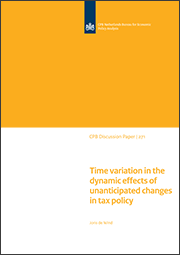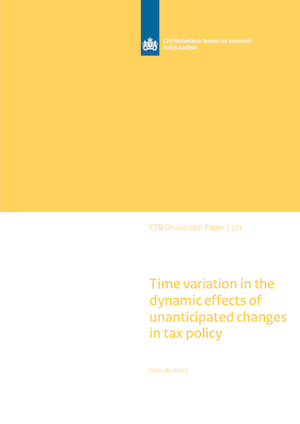Time variation in the dynamic effects of unanticipated changes in tax policy

Read also: CPB Discussion Paper 270 'Reduced-rank time-varying vector autoregressions'.
The estimated time variation points to a permanent decline in the tax multiplier as well as a faster response of the economy. Despite the permanent decline, the estimated tax multiplier is still at the higher end of the range of existing empirical estimates, which is consistent with Mertens and Ravn (2013b), whose identification strategy I follow. Furthermore, the estimated time variation also suggests that fiscal policy has become more countercyclical over time. In particular, spending policy used to be procyclical and has become countercyclical after the beginning of the 1990s, whereas tax policy already used to be countercyclical and has become even more countercyclical over time.
